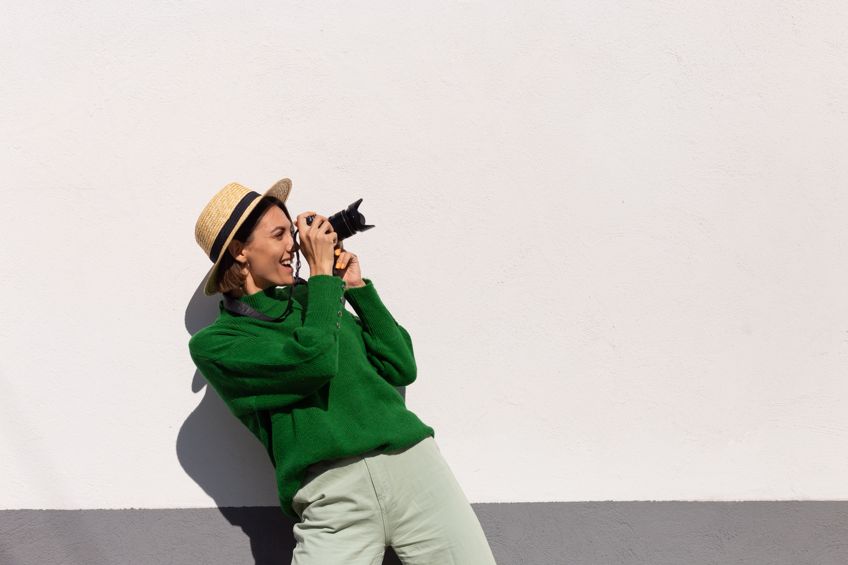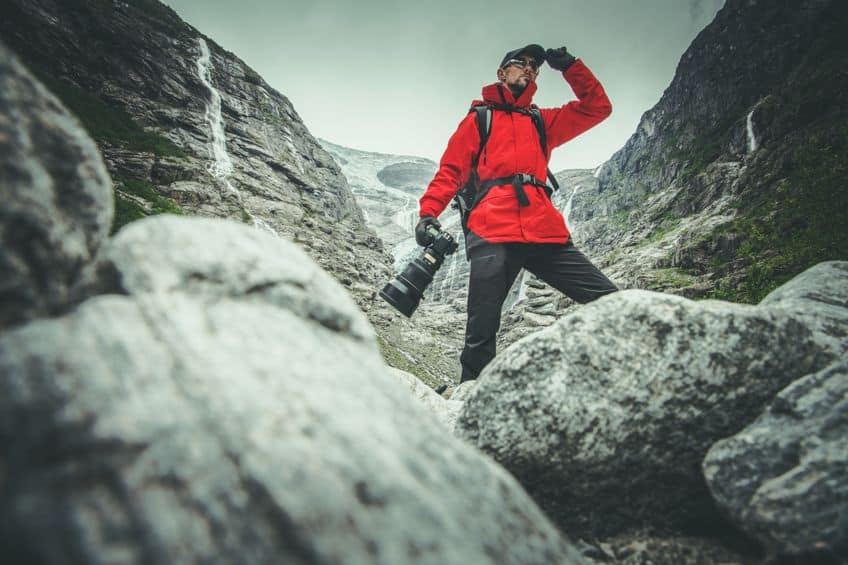History of Photography – From Daguerreotypes to Digital
When did photography start? Who invented photography? And what are some of the major turning points in photography history? Photography is a dynamic art form that has, for over two centuries, evolved to capture some of the most breathtaking and historically-defining moments in history. Without the invention of photography, one might not be able to explore the world’s most beautiful landscapes and attractions from the comfort of one’s own home. In this article, we will introduce you to the fascinating and rich origin of photography, including the importance of the medium on society and the most significant moments in photography that showcase the medium’s evolution. Keep reading for a full picture of how this amazing art form came to be!
Contents
Defining the Lens: What Is Photography?
Since the origin of photography in the 19th century, the art form has seen a great deal of technological advancement, which helps artists and photography professionals capture images in a variety of visually-pleasing ways. Photography can be practiced using a variety of devices and photographic equipment that produces a diverse range of images in unique and interesting ways. What, then, is photography today? And how did this art form emerge into what it is today? The art of photography can be defined as the art of capturing time through a visual representation of a particular moment. There are many reasons why one would capture an image, as demonstrated in the history of photography.
From documenting events to crafting personal stories and re-inventing space, photography is a broad art form that offers much flexibility.
One cannot discuss photography without its relationship to capturing time and becoming physical manifestations of memory or place. Photographs help give one a glimpse into the fabric of time, through the past, present, and future, which are powerful tools for either preserving or altering memory and history. The practice of photography in fine art involves a combination of technical skill and artistic expression that draw from the basic elements of art. These include elements such as color, light, and composition that are used to convey messages, provide information, and help one interpret an image.
Since the start of photography, there have been numerous technological developments in the 20th century that have helped push the boundaries of photography itself and its different functions in society. Photography is an art form that is appreciated by many for its ease of use, accessibility, and function in the world, as seen through social media and the internet.
Below, we will dive into the importance of photography in society as well as the early history of photography and its evolution over the last two centuries!
Understanding the Importance of Photography in Society
As mentioned before, photography opens up one’s access to a large amount of visual information about what is captured and what the photographer chooses to let the viewer see. Photography has proved incredibly beneficial to society and its development since it enables the active historicization and documentation of events in history and personal moments. One can choose to document a family portrait or shoot only large and significant events as visual records of the past. These connections to time can be useful in helping future generations understand their place in the present.
Practicing photography is also one way to boost your sense of self-expression and creativity since it provides enough room for experimentation.
Whether you shoot landscapes, abstract images, or self-portraits, you can be sure to create unique images that highlight the beauty in the passage of time and the subjects and people closest to you. The art of understanding and processing visual information is also considered a visual form of communication that photography helps navigate. Images can become tools that are used to transcend linguistic and cultural barriers and convey complex emotions in a variety of ways that a few words may not be able to do justice. Today, photography is a crucial aspect of fields such as journalism, social media, and advertising since images seem to “make the world go around”.
Images can thus also inspire change among groups of people and be leveraged to draw attention to specific and urgent news and events that spark important public discourses and possess the power to influence people. Industries such as art, fashion, and advertising also have the power to enact significant economic impact and use photography as a large aspect to conduct specific projects. As such, photography is a large source of employment used by photographers, photojournalists, designers, and many other professionals.
Exploring the Early History of Photography
Before the origin of the daguerreotype, there were many attempts by curious professionals on producing photographic images. The early 19th century saw scientists and inventors experimenting with early photography techniques to generate a permanent image that could be replicated via printing methods.
Below, we will dive into the early history of photography, which explores the pre-photographic imaging techniques prior to the daguerreotype as well as the camera obscura and the first permanent image in the world.
You will find that despite the early limitation of pre-photographic techniques, experiments and concepts around imagery were highly influential and crucial to the development of the first reproducible image. By understanding the development of photography, one can gain a deeper appreciation for the many advanced photographic tools available for artists today.
Famous Pre-Photographic Imaging Techniques
Who invented photography? And what were the preliminary ideas around image-making? From as early as the 4th century BCE, Greek philosopher Aristotle championed one of the most significant pre-photographic imaging concepts known as the camera obscura, which alongside other pre-photographic imaging techniques, contributed to the development of the first permanent image. Later on, other famous pre-photographic imaging techniques emerged and include silhouettes, shadowgraphs, physionotrace devices, and the camera lucida.
Shadowgraphy was highly popular in the 18th and 19th centuries and involved the placement of objects on a photosensitive surface, which would be exposed to light to form a silhouette.
Shadowgraphy images were used in early photographic portraits and illustrations. The inexpensive version of shadowgraphy emerged from the idea of silhouette cut-outs that were made by tracing the outlines of an individual’s shadow or profile onto a piece of paper and then cutting it out. Another famous development in photography was the physionotrace device, which was a device used to trace the profile of the sitter onto a copper plate.
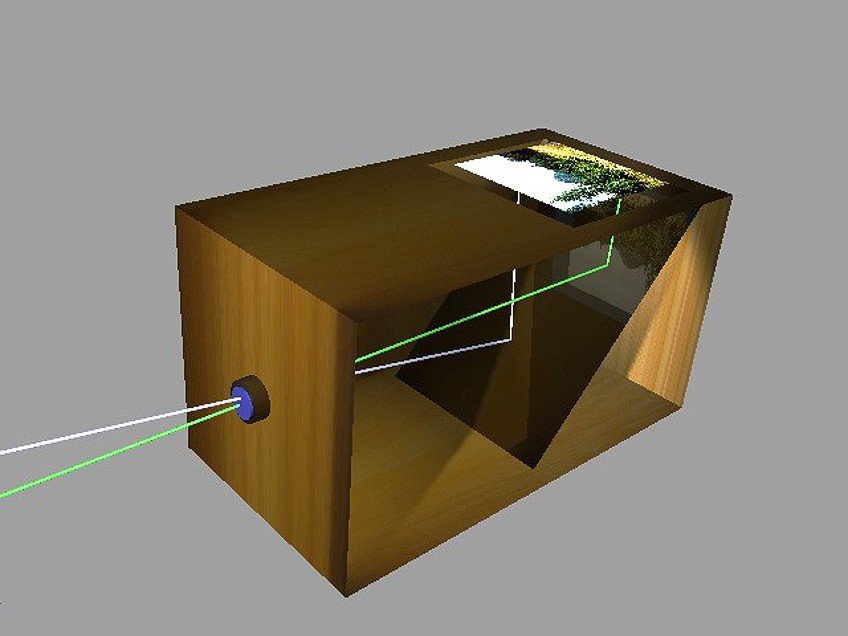
From the copper plate, one could create an etching or engraving of the profile and as such, the early photographic image was made easily reproducible. In 1807, William Hyde Wollaston invented the camera lucida, which was a prism or mirror device that was used to trace the outlines of a scene onto paper and was adopted by many artists to ensure accurate paintings and drawings.
The Invention of the Camera Obscura
The origin of photography has its roots in the concept of the camera obscura, which was among the first pre-photographic imaging techniques proposed by Aristotle, who specified that the camera obscura was a box or room that could be used to project the inverted image of the external world onto a surface within the room. You may be familiar with this technique from pinhole photography, which relies on a pinhole created on one side of a box, with a photo-sensitive piece of film on the opposite end inside the box. When light travels through the hole, the film captures the inverted image of the scene that the hole is facing.
The concept of the camera obscura was crucial to the development of the principles of optics and the way that people understood image formation and its relationship with light.
Towards the 17th century, the concept of the camera obscura was adopted by scientists to further the field of optics and became a form of entertainment for the upper classes. In the 19th century, inventors and scientists interested in photography adapted the concept to produce photographic images and was used by pioneering 19th-century photographers Nicéphore Niépce and Louis Daguerre. As such, the 19th century saw significant development in the quality of images produced in terms of clarity, detail, and accuracy. The camera obscura also enabled ways for photographers to project and expand images on photographic plates.

The First Permanent Photograph
So, when did photography start? And who helped progress it? One of the first major techniques invented to produce photographic imagery was the heliograph technique, which relied on light-sensitive materials to formulate an image. The technique was invented by one of the 19th-century’s earliest photographers, Joseph Nicéphore Niépce in the early 1820s and involves the use of a polished pewter plate that was coated with a layer of bitumen of Judea. The plate would then be exposed to light using a camera obscura, causing the bitumen to harden in places where the light hit it.
After the plate was washed with a solvent, it would reveal the image that was crafted from the exposed bitumen.
The heliograph technique was the first method that was used to produce the first permanent image of the 19th century. Niépce’s invention was a major turning point in the development of photography that laid the foundations of the medium for other scientists and inventors to experiment with and refine. Niépce’s first successful permanent image was produced in 1826 and took approximately eight hours to expose, resulting in a blurred yet permanent image.

A few years later, Louis Daguerre invented the daguerreotype, which became a highly popular technique that relied on the use of a polished metal plate coated in a silver halide. After the plate was exposed for up to several minutes, it was developed using a mercury vapor to create a positive image. After the development of the daguerreotype, many photographers adopted the technique, which resulted in more images that allowed for the realistic and accurate depiction of people.
The Calotype Era
A few years after the invention of the daguerreotype, William Henry Fox Talbot devised the first photographic method that enabled the reproduction of images from a single negative image. This method was called the calotype method, which quickly became one of the most widely-used photographic processes of the mid-19th century.
The calotype technique involved applying a layer of silver iodide on paper that was then exposed to light via a negative to produce a latent image.
The paper was then developed in gallic acid resulting in a print that displayed a different and softer visual quality than the earlier photographic techniques. The importance of the calotype era was rooted in its influence, which helped pilot photography into the fine arts.
An Overview of William Henry Talbot’s Contribution to Photography
The inventor of the calotype method and father of the negative image, William Henry Fox Talbot, was a popular British inventor whose keen interest in the field of photography resulted in significant contributions to the 19th century. His development of the calotype method was an improvement of the pre-existing daguerreotype, which enabled the reproduction of a single negative image and was seen as a considerable leap in photographic technology. Talbot began experimenting with photographic processes in the 1830s to find a way to reproduce images.

Inspired by many early inventors before him, and the camera obscura in mind, Talbot created the first negative image by placing a silver chloride-coated paper into a camera obscura and exposing it to light. The name of the process was called the photogenic drawing, which was a preliminary form of the calotype. By 1840, Talbot released the calotype process, which was much faster than the daguerreotype method, and as a plus, enabled reproduction, thus making photographic images more accessible. Talbot had a lasting impact on the field of photography and also invented the salt paper print process, which required using the same coated paper method but included a salt solution in the process. The image quality from the salt paper print process possessed a greater tonal range than the calotype and was more stable.
The Characteristics of Calotype Images
Some of the defining characteristics of calotype images include its visual elements such as softness, which was a result of the printing process. The texture of calotype images was also quite distinct in that the paper texture was always more visible, which gave the image a tactile, grainy quality. Calotype images also possessed a wide tonal range, producing images with deep shadows and bright highlights.
One of the most identifiable visual qualities of calotype images is their soft focus or blurred effect that resembles a dreamy aesthetic.
Calotype images also produce negative images that can be used to make copies of the image. Their long exposure times were capped at up to several minutes due to the sensitivity of the calotype paper. Finally, calotype images can be identified today by their oxidized brownish tint due to the oxidization of the silver in the calotype.
The Popularity of the Calotype Method
The calotype became increasingly popular after its release after many people began identifying its advantages over the daguerreotype. Calotypes were also less costly than the daguerreotype and offered the bonus advantage of enabling reproduction, which made the process much more accessible to amateur practitioners. The aesthetic of the calotype images as defined by their soft-focus appeal, also grew in preference among the artistic photographers since its grainy and textured quality was also admired and privileged over the sharp detailed images of the daguerreotype method.
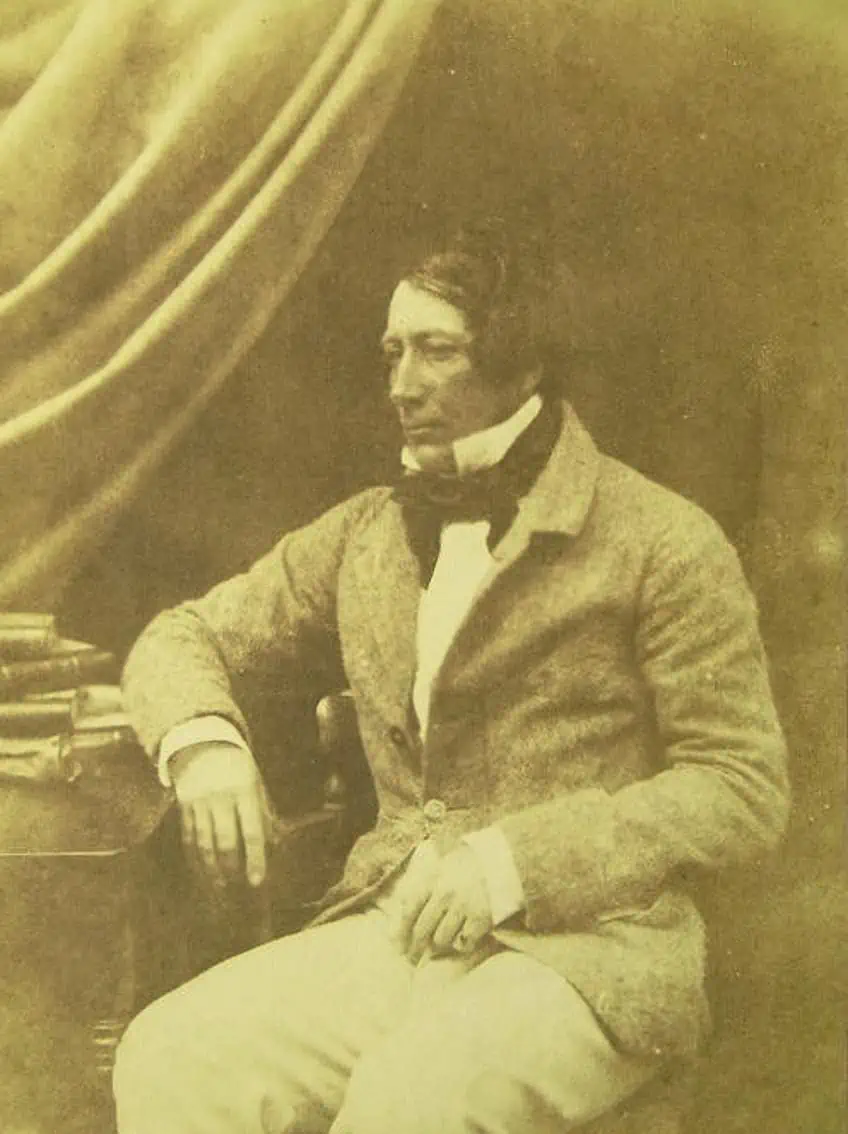
The Wet Plate Collodion Era
In 1851, a new photographic technique emerged and was called the wet plate collodion process, also known as the collodion method. The wet plate collodion method was created by Frederick Scott Archer who defined the process by creating a mixture of collodion, which comprised nitrocellulose, ether, and alcohol, and coating a glass plate with the mixture. He also sensitized the plate with silver nitrate and exposed the plate to a camera while it was still wet.
The image surprisingly resulted in a high-quality positive, which was unique at the time and grew in popularity from the mid to the late-19th century.
To practice the collodion method, one needed to have a portable darkroom. The process was also challenging since it was a time-sensitive process that had to be executed while the plate was wet. Despite the challenge, many photographers rose to the occasion and incorporated the process into their portrait works. The images that were produced also reflected a three-dimensional quality, which made them appealing and fitting for portraiture photographers.
An Overview of Frederick Scott Archer’s Contribution to Photography
British sculptor and inventor of the collodion process, Frederick Scott Archer, revolutionized 19th-century photography by developing a practice method that despite its challenging nature, resulted in unique positive images and new visual qualities. Archer’s invention of the wet plate collodion process was one of the most significant contributions to photography since its quick adoption was marked by the ability for one to achieve a greater level of detail than the daguerreotype. Archer’s collodion method also drove photography to wider spheres, from science and invention to a notable profession and an art form. Archer himself also produced a variety of portrait and landscape works, however, the photographer did not patent his invention and as such, missed out on the financial credit. Regardless, his legacy remains as one of the early pioneers of photography.

The Characteristics of Wet Plate Collodion Images
As mentioned above, images produced from the wet plate collodion method result in higher-resolution images that display a greater sense of clarity and detail due to the use of the large glass negatives. The added detail also enabled the presence of more textures and varied tones. While wet plate collodion photography was often used for landscape photography and studio portraiture, the method also produced odd visual qualities such as halos, dramatic streaks, and other minor exposure errors.
Their tactile quality was also unique since the collodion method involved the physical application of the emulsion onto the glass plate before it was sensitized and developed, which also made it a time-consuming process.
The Popularity of the Wet Plate Collodion Method
There were many reasons why the wet plate collodion method became popular in the 19th century alongside the calotype. Its popularity lasted until the development of the dry-plate negative process in the last quarter of the 19th century and was praised for its ability to produce such high-quality images that also possessed a wider tonal range and finer details as compared to the calotype and the daguerreotype methods. Aside from the appealing quality of the negatives, collodion images could also be reproduced in an unlimited number of prints and were relatively more affordable than the other processes.
The process was also versatile in that it allowed photographers to capture a wider range of subjects, including buildings, street scenes, portraits, and landscapes, which resulted in a boost in creative imagery.
The wet plate collodion process also opened up to a broader audience of professionals and enabled amateurs to also create high-quality images. The invention of the collodion process was much more influential in terms of future inventions and resulted in its later evolved technique called the tintype, which involved the production of images using a thin sheet of metal and was popularized throughout the American Civil War.
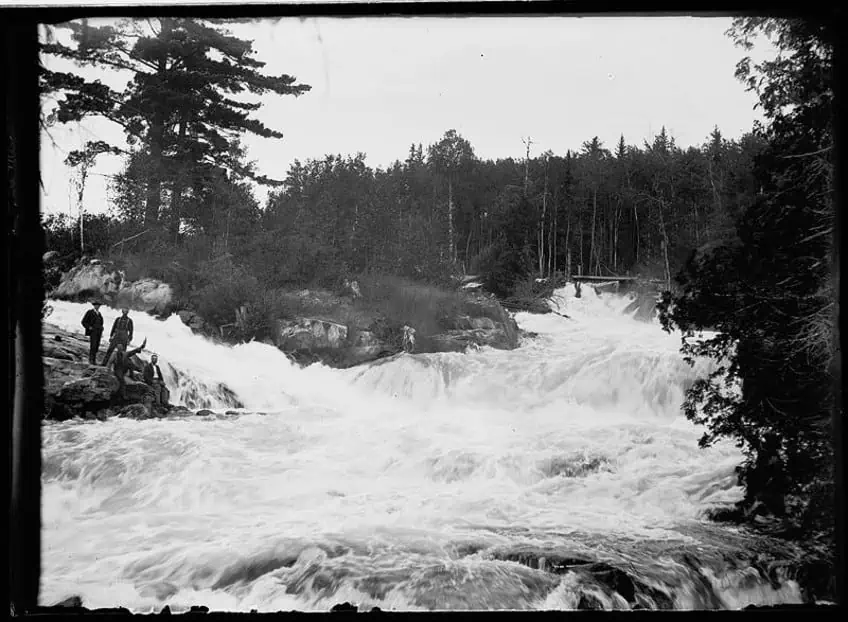
The Dry Plate Era
Towards the late 19th century, photography reached its peak and was on the cusp of evolving into the digital age. The emergence of the dry plate method meant that earlier modes of producing images started to fall away. The dry plate technique enabled photographers to prepare their plates beforehand and store them away for later use. This differed from previous methods since other techniques required one to coat and sensitize a plate right before its exposure. The dry plate era thus presented an easier process that enabled photographers to save time.
The process of the dry plate method involved using a photographic emulsion comprised of silver bromide, gelatin, and other light-sensitive compounds to coat a glass plate.
After the plate dried, it was then ready to be used. The quick preparation enabled photographers to get the job done faster and work more efficiently. The resulting images offered all the appealing visual features such as high quality, wide tonal range, and finer details, which contributed to its popularity.
An Overview of Richard Maddox’s Contribution to Photography
British doctor and inventor of the dry plate technique, Richard Leach Maddox, started experimenting with photography and its different methods in 1871 to improve and develop the wet plate collodion method. He discovered that by substituting the wet plate with a gelatin emulsion, the process became much more convenient, and as such, the dry plate era had begun. His invention not only revolutionized the process of photography, but also made it faster, and enabled portability.
Additionally, his method allowed for higher-quality images than the collodion method and offered a better contrast with a quality that was less likely to result in errors with bubbles and dust spots. Maddox’s method helped propel photography beyond the realm of professional practice and opened up the doors to the artistic hobby, which inspired creativity across the 1880s. Other major photographic techniques invented by Maddox included the Maddox cup and the Maddox film methods, which further advanced the field of photography in terms of convenience. In 1893, he was awarded the Royal Photographic Society’s Progress Medal, which cemented his legacy in photographic history.
The Characteristics of Dry Plate Photography
The characteristics of dry plates were that they are easier and less expensive than any other process on the market at the time. The method also involved the use of a pre-coated plate, which saved photographers a lot of time and made the process more enjoyable. Dry plate-produced photographs also required a shorter exposure period and produced sharper images.
The process of using the dry plate also meant that the dry plate was more durable than wet plate collodion-produced images.
The Popularity of Dry Plate Photography
Since the dry plate photography method boasted a more convenient means of producing images, its popularity soared in the late 19th century and was eventually preferred over the wet plate collodion process. Some of the best aspects of dry plate photography included its practicality, whereby photographers could prepare the plates beforehand for use in outdoor projects or fieldwork. The plates could also be easily transported, which meant that photographers could travel with their equipment to shoot in different locations. Additionally, dry plates were much cheaper to produce and offered a shorter exposure period and detailed imagery. The invention of dry plate photography was a major turning point in photography since it enabled the democratization of photography as a widely accessible medium for all to explore.

The Film Era
The advent of film photography was one of the most defining moments in photographic history. Silver-based photography replaced the wet collodion method and involved the use of a light-sensitive emulsion that was applied on a thin plastic or cellulose acetate strip, which became known as film. The film would then be loaded into a camera and exposed to light through a lens.
The developing process took place in a darkroom and involved chemical processes to develop, fix, and wash the film, such that it produces a negative image.
The negative image could then be processed to produce a positive print on a different material. Today, one can still practice traditional film photography to learn the basics of film and its chemical development process. Below, we will dive into the work of George Eastman and review his contribution to photography and the advancement of film.
An Overview of George Eastman’s Contribution to Photography
Who was George Eastman? And why was he so influential? “You press the button; we do the rest”. All film lovers will recognize the name George Eastman through his affiliation as the inventor of the roll film, which revolutionized photography by making it more accessible to the masses. In 1884, Eastman invented a film that could be applied to a flexible paper base as opposed to glass, which made photography more affordable and accessible. The introduction of the Kodak No. 1 camera in 1888 was also pivotal to the popularity of photography as an artistic medium and would come fully loaded with 100 exposures for anyone to use with ease.
The camera could be sent back to the factory for processing, printing, and reloading of film, which made shooting images and developing them so much more convenient than any photographic process before.
At the turn of the 20th century, Eastman created the Brownie camera, which was designed specifically for children and amateurs to use, which was a huge success that sold millions for the next few years. The Brownie camera was also inexpensive and opened up the scope of who could become a photographer and practice it. Eastman also played a huge role in enabling the acceptance of film as an art form after he established the George Eastman Museum and the Eastman School of Music. Today, film remains a niche hobby and a prominent fine art medium that many artists continue to practice and teach.
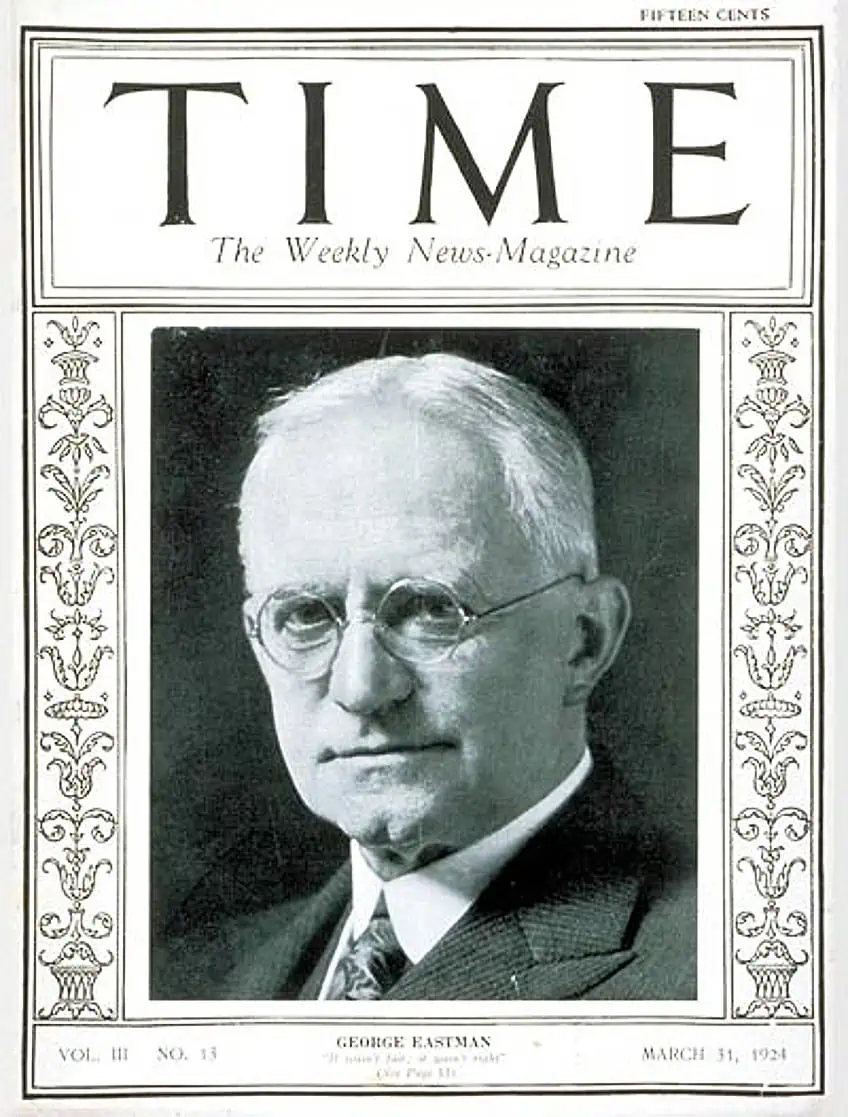
Characteristics of Film Photography
The visual characteristics of film photographs include its unique look and feel that comes with a grainy texture, a depth of field, and a broad color palette. Film can be shot in color or black and white and can be used to create prints of varied scales.
The negative images of film can also be manipulated in the darkroom to generate thought-provoking visuals.
Film photography, when exposed, requires chemical development to produce a negative image. Overall, film photography is much easier to use and process since advancements in technology have made processing more convenient and the development of film cameras and lenses has also expanded the visual potential of film and the manipulation of light.
The Popularity of Film Photography
Since the introduction of film, the 20th century saw rapid adoption of the medium across the globe. The 1900s saw many advancements in film technology, including the invention of panchromatic film, which was produced to be sensitive to all colors and thus enabled the photography of lifelike and real images. The 1920s and 1930s saw an increase in the use of film as a hobby and popular practice in media and advertising since many magazines began introducing photo essays. Film photography continued to dominate the 1940s and 1950s with the advent of color film, which became widely available to the public and by the 1970s, it had become a tool for documentation through some of the Modern era’s most important social, political, and environmental events, including the Vietnam war and various civil rights movements.
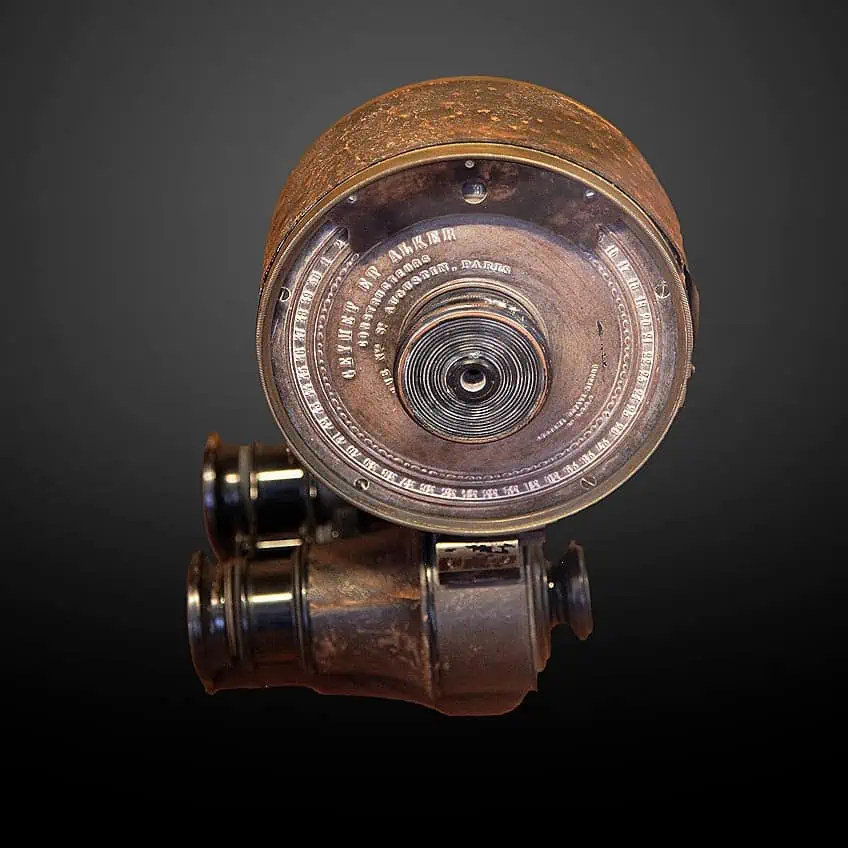
Towards the end of the 20th century, film photography was still in use among large groups of artists since it was starting to lose weight as a modern medium and became a more romantic medium, valued for its unique aesthetic qualities. In the recent decade, film photography has seen a spike in interest across the globe, with many experimental artists and young photographers reviving the art of film photography through documentation of contemporary events.
The Role of Modern Photography in War
While film was among the most prominent forms of photography practiced throughout the Modern era, it also held a crucial role in shaping the evidence or documenting some of the world’s most horrific events. These include the World Wars of the 20th century that used photographers and included them in war events to capture the true and harsh realities of the time.
Photography was also incredibly influential in swaying the public since it was also adopted in creating wartime propaganda and media images to influence the support of or fight against specific political agendas.
Famous photographers such as Henri-Cartier Bresson and many others used photography to document moments of World War II as they occurred in real-time as opposed to staged images, which saw a spike in photojournalism. World War I was captured through the posed images of soldiers, which eventually turned into the graphic and horrific realities of the Second World War.
Highlights of 20th-Century Photographic Technology
Since the start of photography, our understanding of how images are made and how they can be reproduced and edited has evolved significantly. Popular cameras such as the 35mm cameras and the model 95 by Polaroid stood out in the 20th century as the easiest and most appealing cameras to capture events on film and have them developed within a minute. Important figures such as Oskar Barnack invented the first Leica 35mm film camera in 1925, which presented a significant improvement from the bulkiness of early 20th-century models. Before Barnack, Edwin H. Land also proposed one of the world’s most famous photography brands, Polaroid, and created the first instant camera in 1848.
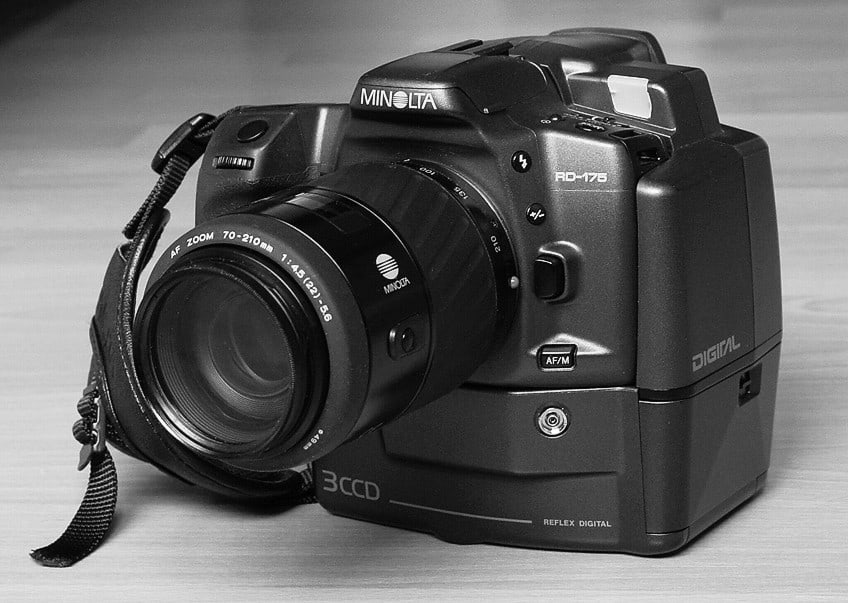
The Japanese also contributed significantly to the advancement of photographic technology to give photographers more control over the end product of their images. In the 1950s, Japanese camera brand Asahi released the Asahi Flex, which was later known as Pentax, and Nikon released the Nikon F camera, both of which were SLRs while the latter could allow photographers to change lenses and add other accessories. Toward the end of the 20th century, smart cameras took the lead through “point and shoot” adaptations, which automatically calculated the focus, aperture, and shutter speed and enabled artists to better concentrate on the elements of their composition. In 1963, brands like Canon released the prototype camera with autofocus while 10 years later, Rollei debuted the first fully automatic camera.
The Digital Era
What is the digital era? Contemporary notions of the digital era are defined by the period from which digital technologies began to contribute significantly to the development of various social systems such as entertainment, communication, commerce, and even photography. This period of the digital age is said to have commenced around the late 20th century when technological advancements such as computers, mobile devices, and the internet began to rapidly take shape as tools for creation, innovation, and transformation. In photography, the digital era can be viewed as a period of growth as seen in the invention of the digital camera.
Editing software enabled photographers to not only shoot images in a variety of convenient ways but to also revolutionize the post-processing phase of Contemporary image production.
One of the main advantages provided to photography in the digital era is the ease of reproduction and distribution, which can now be achieved on a global scale with the push of a button. Photographers can also have their work exhibited in online galleries and social media platforms for more exposure. The introduction of digital photography transformed the genre of photography itself, making it much easier to instantly review, edit, and share images. Digital technology also aided in helping photographers to manipulate their images through innovative means that inspire a variety of unique visual qualities and enabled a higher degree of creative expression.
An Introduction to Digital Photography
Contemporary definitions of digital photography include the art form as a process by which images are captured and stored in an electronic manner as opposed to physically as seen in film. The development of digital photography has transformed the field of photography since it not only enables the production and distribution of images across digital platforms but also enables one to produce higher-resolution images. Digital cameras have also become increasingly versatile and offer a broad spectrum of features and capabilities, including cameras that help one achieve a higher level of clarity and detail in images.
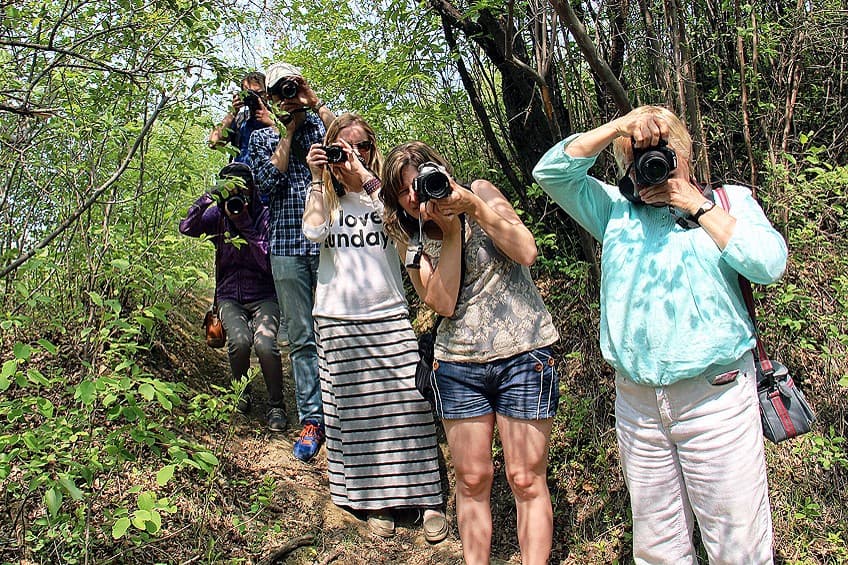
Many digital cameras also come equipped with a few filters and effects that are built-in and allow the photographer to experiment with different styles. Digital cameras also possess advanced low-light performance technology that allows one to capture clear and sharp images under low-light conditions. Additionally, with the advent of wireless connectivity, photographers can also easily transfer their images to other devices for ease of access and an overall efficient post-processing procedure.
Characteristics of Digital Photography
What are the characteristics of digital photography? To understand the basic elements of digital images, it is important to first recognize that the makeup of digital images is composed of pixels, which determine the resolution of the overall image. The resolution quality depends on the number or density of pixels per inch (PPI), which can either produce high-resolution images or low-resolution images. Storage in digital photography is also a lot easier since they can be stored and converted into a variety of digital formats, used for different purposes. Whether it is a JPEG or RAW image, the photo can also be edited in software such as Lightroom or Photoshop to enhance the original makeup of the image.
In the editing software, one can also adjust the color balance, photo size, format, contrast, and other visual elements of the image, which is an enormous leap from 19th-century photographic processes.
The distribution of images can also be achieved through mass uploads and downloads with tools such as Google Drive and DropBox and your own smartphone storage, which enables one to categorize visual information and share images in bulk. Lastly, one of the major beneficial characteristics of digital photography is that it offers one a sense of instant gratification, which allows one to view an image instantly instead of waiting minutes or hours for the image to be processed. Digital kiosks have also made printing photographs incredibly easy with many photo studios offering printing services available for everyone to use.
The popularity of Digital Photography
Ever since the advent of digital photography in the late 20th century and the addition of digital cameras that are more affordable, diverse, and increasingly advanced, photography has become super accessible and user-friendly across the globe. The instant nature of viewing and editing images also offers people more room to experiment with visual layouts and aesthetics without the mess and stress of traditional mediums like painting that require physicality, materiality, and the presence of the subject. With digital photography, artists do not have to rely on the presence of the subject alone and can capture images of subjects, objects, and people effortlessly as part of their digital or physical works. Today, one can easily capture an image and start their own digital photography journey from their smartphone or digital camera. There are also a variety of lenses available for professional industry-specific and outdoor photographers who each use photography for different purposes.
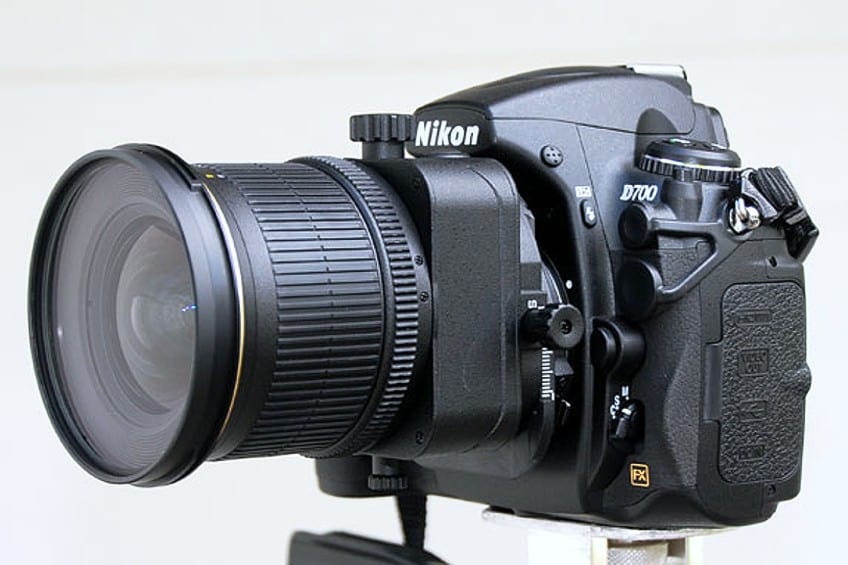
To better appreciate the art of photography, it is always advised that one gains a deeper understanding of the history of photography such that one can learn from the experiences of photographers in the past and broaden their creative horizons. After reviewing the history of photography, it is not difficult to acknowledge that the art form stands as a testament of human innovation and genius whereby photography has evolved into a tool for capturing time and shaping social norms. While the power of the medium is undoubtedly immense, one can also appreciate the contribution of technology in the advancement of photography and the unique challenges that it has resolved since the 19th century. By understanding the history of photography, you can continue to challenge existing technologies and processes to inspire innovation and become a part of the future of image production!
Frequently Asked Questions
What Does Pre-Photographic Imaging Mean?
The term pre-photographic imaging refers to the processes by which images were captured before the development of early photographic processes. Pre-photographic imaging techniques encompass the processes of drawing, the camera obscura, and engraving, which relied on physical skills and artistic insight to produce images as opposed to mechanical and chemical processes.
What Is Photography?
In the 21st century, photography is defined as the practice of capturing and processing images using an analog or digital camera, and other photographic equipment to record the light patterns of a scene and produce a visual image that can be distributed. Photography emerged as a 19th-century development and evolved to include modern technologies and digital software. Photography has various functions and sub-genres that can be practiced across a wide network of industries.
What Are the Different Types of Contemporary Photography?
There are many variations in Contemporary photography. These include fine art photography, portrait photography, fashion photography, documentary photography, landscape photography, sports photography, product photography, architectural photography, wildlife photography, and street photography.
Jordan Anthony is a Cape Town-based film photographer, curator, and arts writer. She holds a Bachelor of Art in Fine Arts from the University of the Witwatersrand, Johannesburg, where she explored themes like healing, identity, dreams, and intuitive creation in her Contemporary art practice. Jordan has collaborated with various local art institutions, including the KZNSA Gallery in Durban, the Turbine Art Fair, and the Wits Art Museum. Her photography focuses on abstract color manipulations, portraiture, candid shots, and urban landscapes. She’s intrigued by philosophy, memory, and esotericism, drawing inspiration from Surrealism, Fluxus, and ancient civilizations, as well as childhood influences and found objects. Jordan is working for artfilemagazine since 2022 and writes blog posts about art history and photography.
Learn more about Jordan Anthony and about us.
Cite this Article
Jordan, Anthony, “History of Photography – From Daguerreotypes to Digital.” artfilemagazine – Your Online Art Source. October 9, 2023. URL: https://artfilemagazine.com/history-of-photography/
Anthony, J. (2023, 9 October). History of Photography – From Daguerreotypes to Digital. artfilemagazine – Your Online Art Source. https://artfilemagazine.com/history-of-photography/
Anthony, Jordan. “History of Photography – From Daguerreotypes to Digital.” artfilemagazine – Your Online Art Source, October 9, 2023. https://artfilemagazine.com/history-of-photography/.



